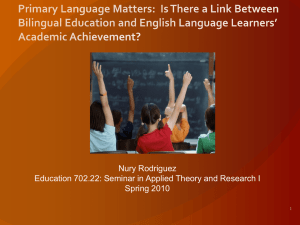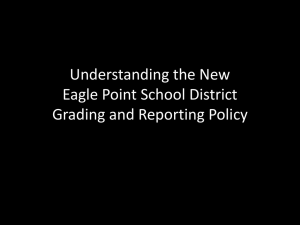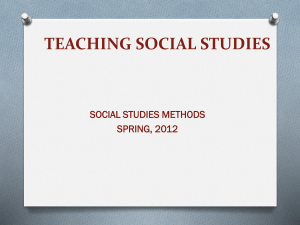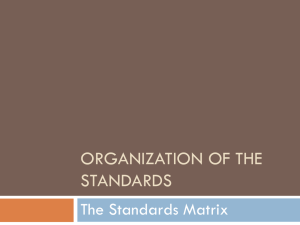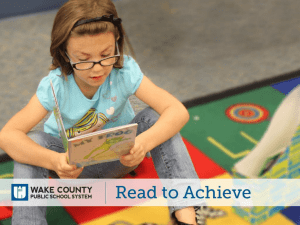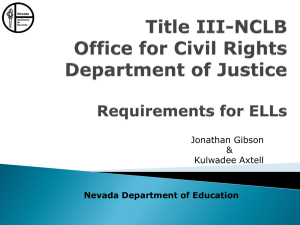3 Teaching mixed proficiency classes (2)
advertisement
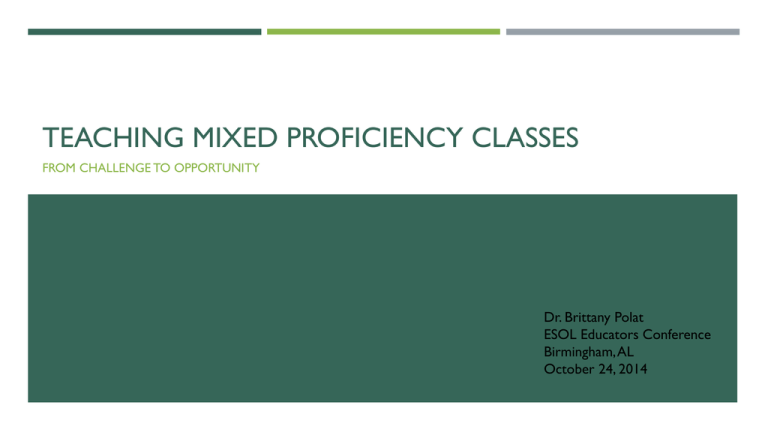
TEACHING MIXED PROFICIENCY CLASSES FROM CHALLENGE TO OPPORTUNITY Dr. Brittany Polat ESOL Educators Conference Birmingham, AL October 24, 2014 THE CHALLENGE Teachers don’t have time to design separate materials or lessons for students of different proficiencies Class time is valuable, so how do you incorporate differentiated teaching while still teaching everyone effectively? How do you manage expectations and emotions of both high and low proficiency students? THE OPPORTUNITY All students will get something out of the class, but not necessarily the same things! (Budden, 2008) High proficiency students have the chance to help others Low proficiency students benefit from advanced help Students become independent learners and learn at their own pace Students learn to value classmates and working together APPROACHES FOR MIXED PROFICIENCY CLASSES Split the class and teach one group at a time Differentiate tasks Use pair or group work Use peer mentoring TASK DIFFERENTIATION Incorporate non-linguistic elements into the task, so that the less proficient students can feel successful Music, drawing, miming, sharing knowledge about the world or their home cultures Include opportunities for creative expression Include more than one objective in an activity, so that students can succeed in at least one part of it Listening, memorizing, creating a simple dialogue, exchanging ideas Build up a mental repertory of tasks for early finishers Include different levels or stages in a task so students can choose what level is appropriate for them Adapted from Lindstromberg (2004) and Rose (1997) TASK DIFFERENTIATION Build in task flexibility through Choice: include different subtasks students can choose from Quantity: ask students to produce different amounts of language Sophistication: ask students to produce sentences that are simple/complex, with basic/advanced vocabulary, etc. Roles of different difficulty Help from classmates Adapted from Lindstromberg (2004) WORK GROUPINGS Pair work: high/low (very controlled activity), high/high (free response activity) Group work: low proficiency students may feel more able to contribute Divide information between students so they have to work together to complete the activity For some lessons, you could keep students in small groups the whole lesson to differentiate material Mingles: students interact briefly with everyone in the class Each student will work with students of different proficiency Adapted from Rees (2003) MODIFICATIONS FOR READING ACTIVITIES Extension for High Proficiency Support for Low Proficiency Ask early finishers to write new vocab up on the board with definitions. Pre-teach difficult vocabulary and leave it written on the board for students to refer to. Write their personal opinion / a short summary of the text. Write questions about the text. Break the text into chunks and give the option of only reading some of the text. Rewrite a part of the text in a different tense / person. Draw attention to the title, pictures etc and set the scene beforehand so their mind is on track for the topic. Adapted from Budden (2008) MODIFICATIONS FOR LISTENING ACTIVITIES Extension for High Proficiency Support for Low Proficiency Give out the script and nominate a ‘vocabulary master’ to Pre-teach vocabulary, use visual prompts when look up tricky words or expressions in a dictionary to appropriate. then explain to the group. Focus on the accents or intonation of the speakers and have students copy chunks. Give students time to discuss answers before feeding back to the class. If it’s a true/false activity, follow on by asking ‘why/why not? Give students the tape script on second listening. Adapted from Budden (2008) MODIFICATIONS FOR WRITING ACTIVITIES Extension for High Proficiency Support for Low Proficiency Give creative tasks that students can do at their own level. Encourage use of dictionaries / vocab books. Indicate mistakes using correction code to give students a chance to self-correct. (Sp = spelling, Gr = grammar) Give an example piece of writing as a model before they begin writing. Indicate where they could use more interesting ways of saying something. Reduce the length requirement. Adapted from Budden (2008) MODIFICATIONS FOR SPEAKING ACTIVITIES Extension for High Proficiency Support for Low Proficiency Ask students to justify / defend their opinions. Give students time to rehearse and gather their ideas before a role play or discussion. Ban easy words like ‘nice’ to push their vocab to a higher level. Grade students on the effort they make rather than their ability. Get students to record themselves and self-correct. Give students more listening and thinking time before calling on them to answer questions. Adapted from Budden (2008) CASE #1: ROTATING ATTENDANCE IN A PROFESSIONAL SETTING The situation: tutoring for very advanced, professional English users in a corporate setting Class 1: A, B, C Class 2: B, C, D Class 3: A, D, E How do you approach this mixed-level class? CASE #2: MIXED ABILITIES IN A COMMUNITY SETTING The situation: public library that welcomes everyone and does not have designated course terms The number and proficiency level of students varies with each class Their needs for English are all very different You design lessons to accommodate those you think will be there How do you approach this mixed-level class? CASE #3: OTHERS? REFERENCES Budden, J. (2008). Adapting materials for mixed ability classes. British Council teaching resources. Retrieved from http://www.teachingenglish.org.uk/language-assistant/teaching-tips/adapting-materials-mixed-ability-classes Lindstromberg, S. (2004). Towards better results with mixed proficiency classes: Use of flexible tasks. Humanising Language Teaching, 6(3). Retrieved from http://www.hltmag.co.uk/sept04/mart1.htm Rees, G. (2003). Teaching mixed-ability classes. British Council teaching resources. Retrieved from http://www.teachingenglish.org.uk/article/teaching-mixed-ability-classes-1 Rose, J. (1997, April 3). Mixed ability: An inclusive classroom. English Teaching Professional. Retrieved from http://www.teachingenglish.org.uk/sites/teacheng/files/mixedability.pdf

